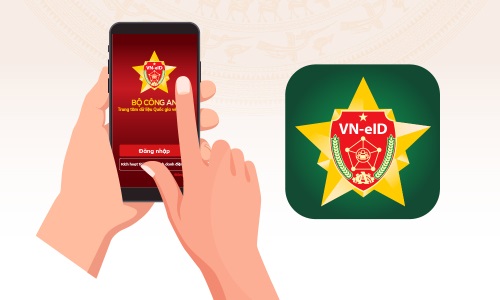Dismissal is the most severe form of labor discipline specified in the Labor Code that the employer uses to discipline employees at the enterprise. The consequence of dismissal is the labor contract is terminated, so that, with the new changes in regulations related to the dismissal discipline in the Law on Labor 2019 (took effect on January 1, 2021), employer and employee need to know the legal changes about the dismissal discipline to protect their rights and interests.
According to the Law on Labor 2019, if the employer wants to use the discipline dismissal to terminate the labor contract with the employee, the employer must have a basis for that the employee commits a violation in one of the following cases:
- The employee commits one or more of the violations defined by the employer in the Internal labor rules and this Internal labor rules must be registered at the provincial labor management agency if the enterprise has 10 or more employees; or
- The employee commits one or more of the violations agreed in the labor contract;
- An employer may dismiss an employee in the following circumstances:
- The employee commits an act of theft, embezzlement, gambling, deliberate infliction of injuries or uses drug at the workplace;
- The employee discloses technological or business secrets or infringing the intellectual property rights of the employer;
- The employee commits acts which are seriously detrimental or posing a seriously detrimental threat to the assets or interests of the employer, or commits sexual harassment in the workplace against the internal labor regulations;
- The employee repeats a violation which was disciplined by deferment of pay rise or demotion and has not been absolved;
- The employee fails to go to work for a total period of 05 days in 30 days, or for a whole period of 20 days in 365 days from the first day he/she fails to go to work without acceptable excuses.
In addition, the employer must comply with the following general principles, order and disciplinary procedures:
- The employer is able to prove the employee’s fault;
- The process is participated in by the representative organization of employees to which the employee is a member;
- The employee is physically present and has the right to defend him/herself, request a lawyer or the representative organization of employees to defend him/her; if the employee is under 15 years of age, his/her parent or a legal representative must be present;
- The disciplinary process is recorded in writing;
- It is prohibited to impose more than one disciplinary measure for one violation of internal labor regulations;
- Where an employee commits multiple violations of internal labor regulations, he/she shall be subjected to the heaviest disciplinary measure for the most serious violation;
- Harming the employee’s health, life, honor or dignity when;
- No disciplinary measure shall be taken against an employee during the period when:
- The employee is taking leave on account of illness or convalescence; or on other types of leave with the employer’s consent;
- The employee is being held under temporary custody or detention;
- The employee is waiting for verification and conclusion of the competent agency for acts of theft, embezzlement, gambling, deliberate infliction of injuries or uses drug at the workplace, discloses technological or business secrets or infringing the intellectual property rights of the employer, commits acts which are seriously detrimental or posing a seriously detrimental threat to the assets or interests of the employer;
- The employee is pregnant, on maternal leave or raising a child under 12 months of age;
- The employee has a mental illness or another disease that causes the loss of consciousness ability or the loss of his/her behavior control.
What is the order and procedures for handling the labor discipline?
The employer must comply with the following labor disciplinary order and procedures:
Step 1: When detecting an employee violating the labor discipline at the time of the violation, the employer is responsible for making a violation record. The violation record must be signed by the representative of the employer and the employee. In case the employee does not sign, the reason must be clearly stated.
In case of detecting that the employee violates the labor discipline after the violation occurs, the employer shall verify and collect evidence to prove the employee’s fault. The employee shall make a violation record to record the employee’s violation.
The violation record must be notified and sent to the trade union or the representative employee organization at the enterprise (if any).
Step2: In case of holding a meeting to handle the labor discipline, the employer must send a notice of the content, time and place of the meeting, the full name of the employee to be disciplined, and violation to the trade union or the representative employee organization at the enterprise (if any), the employee, the lawyer or other representative to which the employee asks for the defense at least 05 working days from the date of the meeting.
Step 3: Opening a meeting to discipline the employee. The discussion on labor discipline can only be conducted when the participants are fully present, as notified in Step 2. Typically, if the employer has given a written notice 03 times, but one of the participants is not present, the employer still conducts the labor discipline meeting.
Step 4: At the meeting on labor discipline, the employer is responsible for proving the employee’s fault.
The meeting on labor discipline must be recorded and approved by the participants before the end of the session. All participants and the record-maker must fully sign the violation record. In case one of the participants attended the meeting without signing the minutes, the record maker must clearly state their full name and reason for not signing (if any).
Step 5: During the statute of limitations, the competent person shall issue a decision to dismiss the employee.
The decision to discipline dismissed workers must be sent to all parties mentioned in Step 2.
Another issue that employees and employers need to comply with when applying disciplinary dismissal is the statute of limitations, specifically as follows:
- The time limit for taking disciplinary measures against a violation is 06 months from the date of the occurrence of the violation.
- The time limit for dealing with violations directly relating to finance, assets and disclosure of technological or business secrets shall be 12 months.
- In case the time limit stipulated has expired or is shorter than 60 days, the former may be extended for up to 60 more days.
- The employer must issue a disciplinary decision within the period specified in this regulation.
Here is an overview of some regulations so that employers can legally dismiss employees according to the provisions of the Labor Code 2019 from January 1, 2021. From there, the disciplinary action against employees in the form of dismissal needs to have a clear basis and comply with specific conditions and procedures. In case an employer does not comply with one of the conditions required by law when dismissing an employee, the enterprise may incur many risks. To learn more about the dismissal, in the following article, we will mention and analyze specifically for the employees and employers to know.
If you have any questions or require any additional information, please contact Apolat Legal – An International Law Firm in Viet Nam.
This article is for general information only and is not a substitute for legal advice.





































